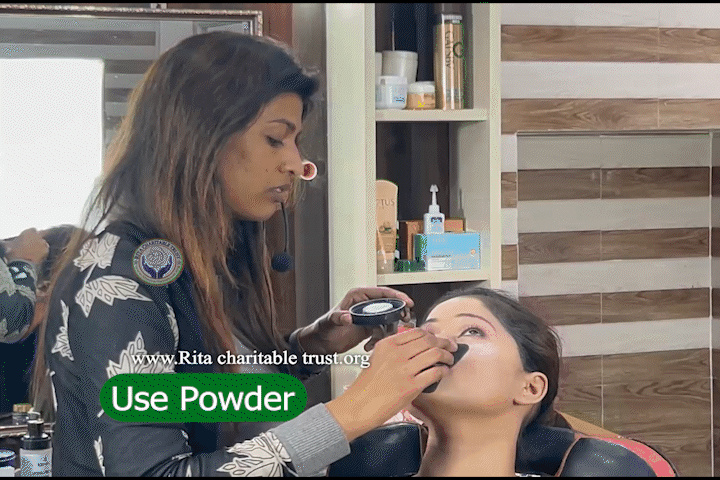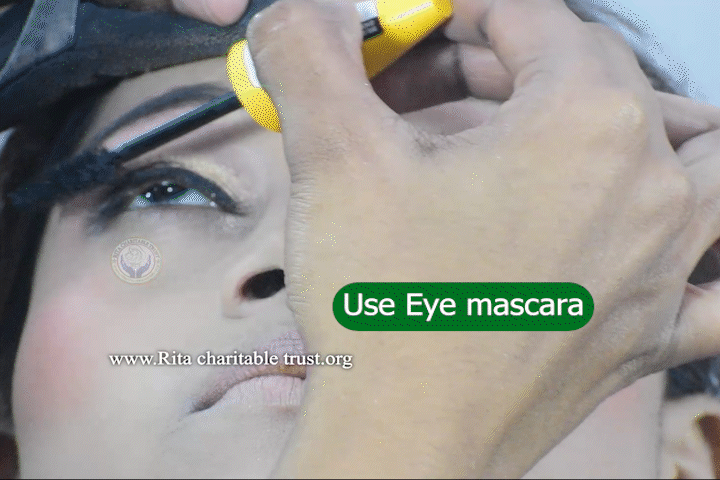Beautician Class Notes 01
Preparing Your Face
Wash your face. Before applying makeup in the morning, wash your face so you’ll be able to start with a fresh canvas. Use a cleanser or simply splash lukewarm water on your face a few times to wash away any debris on your skin. Pat it dry gently with a soft towel.
- Avoid washing your face with hot water. This will dry it out and leave it prone to irritation. Lukewarm water is best when you’re washing your face.
- Don’t scrub your face dry. This causes fragile facial skin to loosen over time.
Consider exfoliating. It’s not necessary to exfoliate every day, but doing so every few days is essential to keeping your skin looking fresh. Putting makeup on over dry, flaky skin defeats the purpose! Exfoliate your skin using either a small facial brush, an exfoliating scrub, or another exfoliating tool designed for use on the face. Focus on areas that tend to get dry and flaky.
- Using a face mask from time to time is another good way to keep your facial skin in good shape. Choose a clay mask, which will cleanse your pores and help pull off dry skin when you wash it away.
Apply a moisturiser. The last step before applying makeup is putting on some moisturising lotion. This will help your makeup go on more easily and create a better final look. Choose a good face moisturiser that works with your skin type. Massage it gently all over your face. Don’t forget your eyelids, lips, and nose.

- Let the moisturiser absorb into your skin for a few minutes before you move on to applying makeup. Putting makeup on while your face is still wet or sticky will result in a mess!
Applying Foundation and Powder
Apply foundation that matches the tone of your skin. Choose a foundation that works with your skin type and matches your colouring. Liquid foundation is a fine choice for many types of skin. You can also use tinted moisturiser or BB cream. If your skin is on the oily side, you might want to consider a compact or powder foundation. In the store, test your foundation to make sure it matches your face by dabbing a little on your jaw bone. Never apply it on the back of your hand as the skin colour is different from your face.

- Apply the foundation evenly over your face using a foundation brush, pad or your finger. Make sure it doesn’t cake or clump anywhere.
- Avoid putting extra layers of foundation over blemishes. It’ll only make them stand out more.
- Blend the foundation around the edges of your face and where it meets the bottom of your chin.
Apply concealer. Choose a concealer that matches your skin tone – or, if you have dark under-eye circles, go one shade lighter. Apply a light amount of concealer using either a concealer brush or your finger by dabbing it under your eyes and gently blending it in. This will make your eyes look bright instead of sleepy.

- If you’re trying to pare down your makeup routine, you can skip the concealer. It all depends on which features you want to play down and which you want to highlight.
- Use a little extra concealer on blemishes if necessary (making sure to use a colour that matches your skin tone).
Apply powder. Choose a powder that matches your skin tone. Use a powder brush (a large, fluffy brush that will apply the powder evenly) to apply the powder to your face in a circular motion. This will give your face a natural-looking finish and help set your foundation so that it stays in place all day.
- On days when you have more time to spend applying makeup, you can also apply bronzer and highlighter to contour your face. Bronzer helps create flattering shadows, while highlighter brightens areas you want to have pop.

Apply blush. Choose a pink-toned blush that brings out the best in your facial colouring. Swirl a blush brush in the container, smile, and apply it to the apples of your cheeks in a circular motion.
Applying Eye Makeup and Lip Color
Apply eyeshadow. Choose a neutral shadow pallet for a simple, everyday look. Brown, gold, grey, and blue tones are all good choices, depending on your eye color. Avoid bright colors, “smokey eye” pallets, and other bold jewel tones, as they’ll look out of place during the day. Here’s how to apply eyeshadow to make it look natural and pretty:

- Start by applying a base shadow in a color close to your skin tone. Use your finger or an eyeshadow brush to apply it on your lid and all the way up to your eyebrow.
- Apply a medium-dark color to your lid, working your way from your eyelashes up to the crease.
- Use a fluffy brush to blend the colors at the crease.
Apply eyeliner. Choose a charcoal, navy, or brown eyeliner to use during the day – save your black eyeliner for nighttime wear. Apply it just above your eyelashes, taking care to make sure it goes on smooth and straight. Use your eye shadow brush to blend it lightly so that the line looks less harsh.

- You can use a pencil liner or a liquid liner. Either one is great for daytime use. You can also use a dark eyeshadow for a more natural look.
- If the line gets smudged, use a cotton swab to gently remove it, then reapply.
- For an everyday look, don’t use liner on your lower lids.
Apply mascara. Apply one coat of mascara on both your upper and lower lashes. Insert the brush at the base of your lashes and sweep outward. After you’re finished with one eye, dip the brush in the bottle again before applying mascara to the other eye. Either black or brown mascara is fine for everyday wear.

- If you don’t want to apply mascara, you can use an eyelash curler to curl your lashes for a natural, pretty look.
Apply lip color. Use a pink or neutral-colored lipstick or lip gloss to finish your everyday look. Avoid using heavy lipliner and bright, bold colors during the day. Dab a tissue on your lips to remove excess lipstick or gloss.
- If you want to use a bright color, you can mute it for daytime wear by applying it to your bottom lip, rubbing your lips together to coat both of them in color, then applying a clear gloss.
